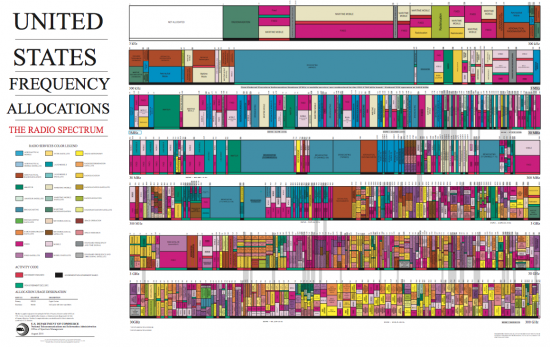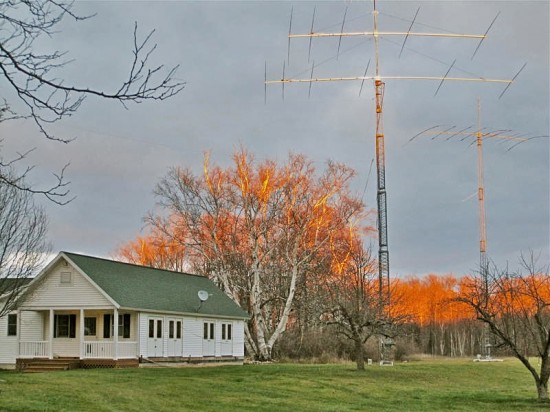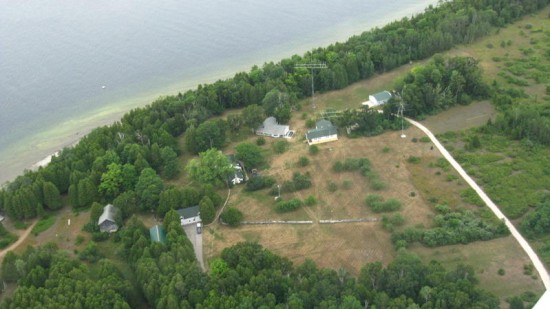 Category: Amateur Radio
Category: Amateur Radio
A Ham in the Family
 Forty years ago, singer and songwriter Jim Croce was enjoying new found success after signing a recording contract with ABC Records. Croce released two albums and several singles, including You Don’t Mess Around with Jim, Operator (That’s Not the Way It Feels), and Time in a Bottle. His biggest single Bad, Bad Leroy Brown hit number one on the American charts in July 1973.
Forty years ago, singer and songwriter Jim Croce was enjoying new found success after signing a recording contract with ABC Records. Croce released two albums and several singles, including You Don’t Mess Around with Jim, Operator (That’s Not the Way It Feels), and Time in a Bottle. His biggest single Bad, Bad Leroy Brown hit number one on the American charts in July 1973.
Tragically, Croce died two months later, in September 1973, when the plane that was to take him from a performance in Louisiana to Texas on a concert tour crashed moments after take-off. Guitarist-songwriter Maury Muehleisen, who performed with Croce, and others, died in the crash. Croce left behind his wife Ingrid, a two-year-old son, and a number of hit songs that are still heard frequently today on radio stations across the country and available on CD and digital downloads.
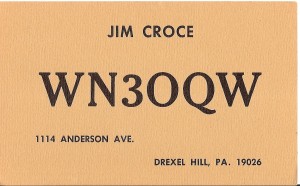 Through the years, some ham radio operators believed they contacted Croce in the 1970s when working WN3OQW of Drexel Hill, Pennsylvania, the town where Croce grew up. The name on the QSL card the operators treasured was indeed “Jim Croce” and the card bore the address 1114 Anderson Avenue, known to be the home of Croce’s parents.
Through the years, some ham radio operators believed they contacted Croce in the 1970s when working WN3OQW of Drexel Hill, Pennsylvania, the town where Croce grew up. The name on the QSL card the operators treasured was indeed “Jim Croce” and the card bore the address 1114 Anderson Avenue, known to be the home of Croce’s parents.
However, in corresponding with Croce’s widow Ingrid, she reveals that WN3OQW was Jim Croce’s father. “James senior was the ham radio operator in the family,” Ingrid said. “Jim was the DJ at Villanova. He had a three hour Sunday night gig on WWVU.” More than a few hams who contacted WN3OQW then received the QSL card in the mail believed they had con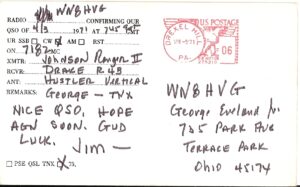 tacted the performer. But as Croce’s widow reveals, those hams instead had the privilege of working the man who gave us Croce and his timeless music.
tacted the performer. But as Croce’s widow reveals, those hams instead had the privilege of working the man who gave us Croce and his timeless music.
George Eveland W8VG, formerly of Stafford, Virginia, contacted Croce’s father in 1971 and, as can be seen in the images in this article, still has a WN3OQW QSL card and his logbook showing the contact. “I was running a Drake 2C I’d gotten for Christmas in 1969,” said George, who was 14 at the time and held call sign WN8HVG. “That day was a Saturday and the contact was early, about 7:45 a.m. so I probably slid right out of bed and went straight to my radio shack, which was in the back corner of my bedroom on second floor of house,” George said. As can be seen on the reverse side of the senior Croce’s QSL card, Croce was running a Johnson Ranger II, Drake R4B receiver, and a Hustler vertical antenna. Eveland recalls listening to Jim Croce’s music during his teen years. “I remember sitting there during my senior year of high school listening to Operator, my favorite, and not being able to believe he was already gone,” he said.
Special thanks to George Eveland W8VG for sharing his logbook and QSL card images. QSL card & logbook images copyright © George Eveland W8VG. All rights reserved. A search of the U.S. Copyright database produced no registrations for the image of Jim Croce, which appears to be in the public domain.
U.S. Frequency Allocations Wall Chart
Any ham knows that the radio spectrum is crowded. How crowded? Well, nothing drives home the point better than this PDF wall chart from the Department of Commerce. Click here to access the PDF.
A Visit to the Real Life Candy Store
By Don Smith, KI4FON
In July I had the good fortune to spend several days with W9EVT on Washington Island, WI. If you do not know George he has a collection of some 1100 plus radios civilian and military types the majority of them in working order. I copped his photo from his QRZ page and yes I sat in that same chair. I also had the opportunity to have a QSO with Dave WA3GIN with George participating in the QSO. What a hoot!
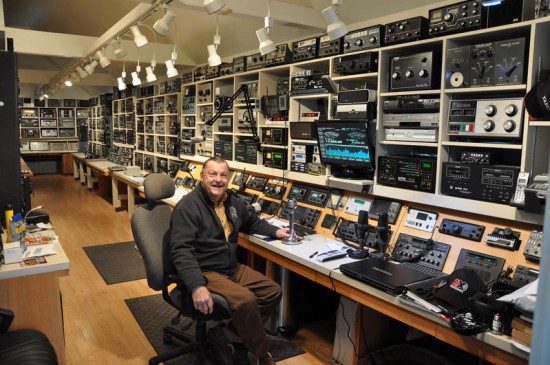
George Ulm, W9EVT, sits among his collection of 1,100 or so radios at his Washington Island, WI, ham shack.
In addition to working Dave I worked several other stations as well. George is well known on the bands. Everyone I worked using KI4FON/9 Washington Island knew I was using George’s station. With a full KW of power there are not many places that George cannot get into. The antenna farm helps tremendously. The farm consists of three towers at 100 feet each as well as several wire antennas and a vertical.
While operating I was using an IC 7800 pushing an ALPHA top of the line amplifier. The rotors utilize a digital control box, gotta have one of those for the shack in Alexandria. George also has a Flex 5000 but it was not in line when I was there. He had to send it back because the finals were weak and he had not unpacked the radio.
George and I had some long conversations about amateur radio and radios in particular. He showed me several of his prize radios all very easily identified. There was one that had him stomped. It was a Collins military radio in a rack, in fact he two of them. The one that stumped had a plate on its face the said “NASA WALLOPS”. He understood the NASA part but could not figure out the WALLOPS meant. As a good ole Virginia boy I was able to solve his mystery. Of course the radio had been at the Wallops Island facility on the banks of Virginia’s eastern shore. It sure is fun solving a mystery for someone like George.
Just a couple of footnotes about my trip to Washington Island, WI. Two years ago my wife and I traveled to Door County, WI. to attend the celebration of the wedding anniversary of some close friends. Through some messages posted on QRZ I was aware of who George was and knew we were not far away. I arranged a trip to visit George and also took my wife to a nationally known fiber arts studio that just happens to be a mile away from George’s QTH. My wife decided she had to take one of the classes the studio offered. Apparently the class she wanted fills up fast, hence the two year wait. What a deal she went to class and I got to play with George’s radios.
If you look closely at George’s QRZ page he lives on Green Gate Farm and yes there is in fact a green gate. On the property are four cottages available for rent. One of the cottages is in the ham shack and is called The Shack. I was present when Susan, George’s XYL was showing a potential around. They did not understand why she called it a shack, so I offered an explanation. This is not intended to be a sales pitch but if your XYL is into fiber arts it could mean an opportunity for you to play with George’s radios.

